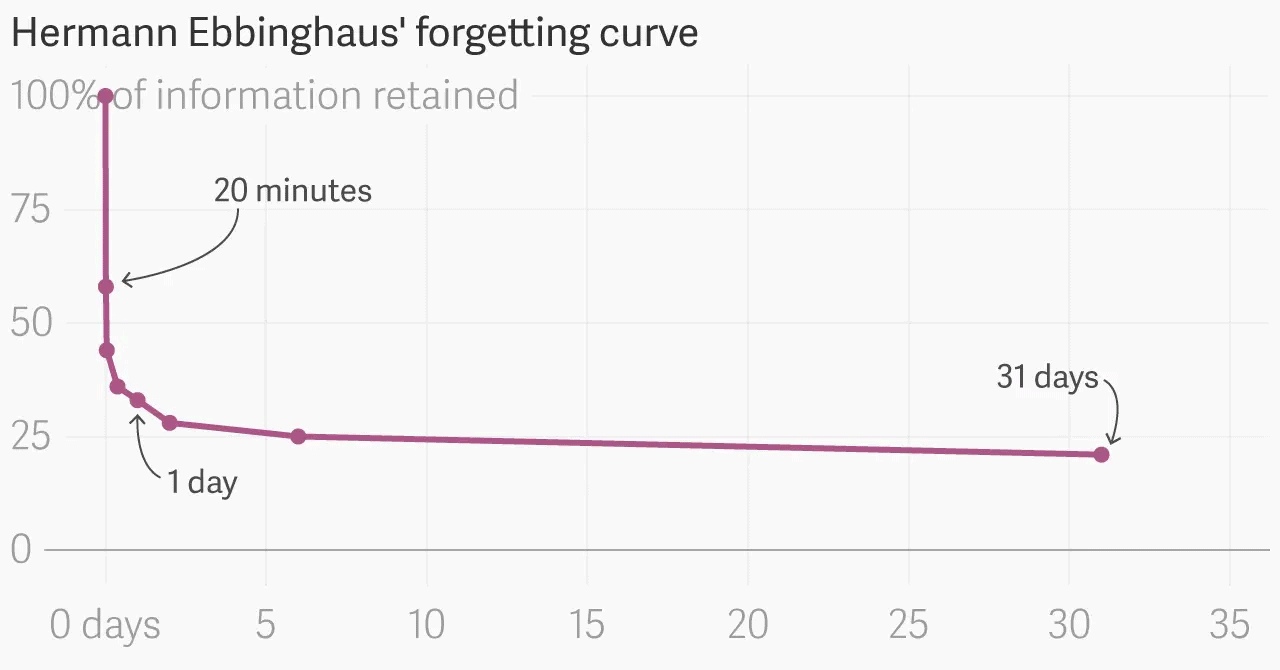Listen! Can you hear that? It’s the sound of active listening improving your sales team performance. It’s the sound of the winds of change…
No, but seriously; listen. It’s a skill. Most of us take it for granted because vibrations get into our ears whether we like it or not. It’s something that can’t really be prevented. It’s so fundamentally ingrained into our everyday life that we had to put the word “active” in front of it to differentiate from the regular old listening that people do automatically.
Active listening is a whole different ball game.
Table of Contents
What is Active Listening?
Active listening is when you stop thinking about what you’re going to say next and you start empathizing with the speaker. It’s where you listen deeply and understand their point in much more detail. It’s where you can put yourself in the speaker’s shoes and comprehend their thoughts, beliefs, and actions.
If you’re looking into active listening to improve sales team performance, then the goal is to come to a mutual agreement. You want to understand the prospect’s pain points, fears, and doubts. Then after you’ve listened to what they’ve said, you’ll want to ameliorate their worries and market your product as the solution to their problem.
It’s not just about appearing to listen, though. In order to get the benefits out of active listening, you need to actually listen and understand. You need to grasp the prospect’s meaning.
There is a method to this.
The Active Listening Checklist
- Acknowledge the prospect’s needs: Listen from your prospect’s point of view. Forget what you want for a moment and try to truly understand what the prospect wants. Halt your internal train of thought and get a deeper feel for what the client wants. This isn’t just listening with the ears either. Pay attention to visual cues such as facial expressions, body language, and other non-verbal tics.
- Confirm your comprehension: You want to repeat the prospect’s words back to them, but not like a parrot. Instead, confirm that you’ve understood their meaning by asking them: “Do you think I’ve understood what you told me?” By doing this, you avoid placing the blame on their failure to communicate and offer them the chance to expand upon what they’ve told you. If they feel like you’re blaming them, communication can often break down. Simply repeat back to them and then confirm you’re on the same page.
- Follow up and clarify: Once you’ve confirmed that you’re both riding the same wave, it’s a good idea to ask open-ended questions. This way, prospects can often come to the conclusion themselves that there is a solution to their problem – very likely in the form of your product. In addition to this, you’ll get the prospect thinking out loud about their predicament which gives you the opportunity to work out the reasons why your prospect will or won’t buy from you.
What are the Benefits of Active Listening?
The benefits of active listening are nearly endless – but let’s cover the basics, shall we?
1. Improved Understanding of Customer Needs
The art of closing the deal is made ten times easier when you treat the prospect’s concerns seriously. By understanding their needs and pain points more empathetically, you can tailor your services to meet them where they feel comfortable.
By actively engaging in the conversation, salespeople can gain deeper insights into the customer’s needs and preferences which will come in essential later on. Especially if you need follow-up calls and you were wise enough to record your sales pitches in advance…
2. Build Stronger Relationships
When a prospect feels heard and understood, they feel valued. This increases trust in both the salesperson and the company they represent. It’s natural and inevitable. People like to feel understood.
Active listening can be used to strengthen rapport which is an essential tool for salespeople. It allows strong and long-lasting relationships to be built that are based on genuine understanding and empathy. In the end, you’re both going to benefit and so the relationship should be mutual.
3. Customized Solutions
Ever heard of a thing called shoes? Try putting the same pair on seven billion different pairs of feet. It won’t take more than a handful of people to realize that one size definitely does not fit all. People are different, and that’s the beauty of life.
When it comes to sales, this doesn’t have to be a hindrance. In fact, it can be something great. When you get to know a prospect and understand what they need in more depth, you can tailor your services to match their exact needs rather than trying to sell them a general package. Customize and personalize and you’ll have a lot of happier customers.
It’s worth noting that this customization demonstrates that the salesperson values the customer’s unique situation, increasing the likelihood of a successful sale.
4. Overcoming Objections
Active listening enables salespeople to identify and address potential objections more effectively. By paying close attention to what customers are saying, salespeople can proactively address concerns and doubts, making it easier to overcome objections and close deals.
In essence, when you actively listen to a prospect’s objection, rather than quickly think of a counter argument, it shows that you are invested in finding the right outcome for your prospect. You value their opinion and want to help them rather than force your product down their throats.
5. Effective Communication
As we already mentioned, active listening isn’t just about hearing the words being said. It’s also about understanding the context, the emotions, and the underlying messages present in the prospect’s delivery. This includes non-verbal information.
By truly listening, you focus all of your attention on the speaker and give them room to say what they need to say. Never interrupt a prospect while they’re speaking. This can break down communication and make them feel undervalued. They may begin to think you’re just trying to sell them something and that the conversation is a one-way street. Instead, do the opposite and invite two-way communication to truly get to the bottom of what the prospect needs and how you can tailor your services to them.
6. Gathering Insights for Product Development
Sales teams are an often overlooked but vital source of feedback for product and service development. They speak first-hand with the potential customers. They learn what they want and what they don’t want. They understand what they need. This information shouldn’t be compartmentalized.
Active listening, with the help of a meeting recorder like tl;dv, allows salespeople to collect insights from customers’ experiences and preferences and funnel them back to product teams. This acts as a type of user research which, when organized well, can beneficially inform future product decisions. And if you’re not already recording your sales pitches to improve sales team performance, there are tons of reasons why you should be.
tl;dv can be used as a product research tool for user researchers to specifically gather insights, or the same features can be used when salespeople are running pitches to new clients. How? It’s easy.
Use the intuitive AI to get instant summaries, ample notes, and accurate speaker recognition. You can use the search function in the tl;dv library to quickly find what you’re looking for and make clips and reels from numerous recordings at once.
Nobody has to waste time rewatching the entire meeting anymore – that’s soooo 2018. Just skip to the insights and make easily shareable reels to spread the word to stakeholders and other teams. Converting sales pitches to actionable insights has never been easier.
7. Increased Sales Success
When customers feel understood and valued, they are more likely to make a purchase. That’s just a common fact of life. Active listening helps salespeople align their offerings with customer needs, resulting in a higher success rate in closing deals.
You can also use call recordings to more accurately forecast sales success.
8. Reduced Misunderstandings
Miscommunications can lead to frustration and lost opportunities. Active listening minimizes misunderstandings by ensuring that both parties are on the same page and that any confusion is clarified promptly.
This is further enhanced by a sales recording software like tl;dv that can give you a complete transcript of the meeting to glance over before heading into the follow-up. Use it to reduce misunderstandings in your next call: start by re-clarifying the prospect’s pain points and needs and make sure nothing has changed in the interim.
9. Enhanced Problem-Solving
Another no-brainer: salespeople who actively listen are better equipped to identify complex issues and challenges customers are facing. This enables them to work collaboratively with customers to find creative solutions that meet their specific requirements.
You’re far more likely to solve a problem if both parties are on the same page than if one of you is rushing ahead with the goal of finalizing the sale in mind rather than truly understanding the prospect’s concerns.
10. Positive Reputation
Word-of-mouth referrals and positive reviews often stem from excellent customer interactions. Sales teams that practice active listening can leave a positive impression on customers, leading to more referrals and repeat business.
This should be reason enough to start active listening. People love being heard. In such a busy world where plenty of salespeople don’t give a sh*t, you really stand out when you actively listen. A happy customer remembers.
The Proof is in the Pudding
Research shows that active listening alone can improve sales performance by 8%. Not only that but 75% of the time, whilst regular non-active listening, we are “distracted, preoccupied or forgetful.” This can have knock-on effects on other areas of sales too. If you’re forgetful, your prospect is likely to feel disconnected and like their opinion isn’t valued. If you’re distracted or preoccupied, you’re not going to be actively engaged in the conversation or making the most of the opportunity.
What’s really crazy is that, on average, one day after your call you will have forgotten around 75% of what was said. This might not be too bad if all sales were confirmed in the first call, but research shows that it takes an average of six calls to make a sale.

Source: Practical Pie.
Even if you were actively listening to the prospect during your online meeting, the chances are that you will still forget the majority of what was said within a few days.
Active Listening vs Passive Listening
Not all listening is created equal and while you may believe you are “active” listening, it is very easy to be stuck in passive listening mode.
As we have found, active listening involves fully engaging with the speaker, understanding their message, responding thoughtfully, and remembering the information for future use. This method is not just about hearing the words but also about interpreting the underlying emotions and intentions. Sales professionals who master active listening are more likely to build trust with their clients, tailor their offerings more effectively, and close deals successfully.
Passive listening is characterized by a lack of active engagement during communication. Passive listeners may hear the speaker but do not process the information deeply. In sales, this can lead to misunderstandings and missed opportunities. Clients can often tell when they are not being genuinely listened to, which might result in decreased satisfaction and loyalty.
The question is, which are you doing? When you’re in a conversation and not sure, check for these following signs:
- Eye Contact: Are you maintaining steady eye contact with the speaker? Active listeners use eye contact to show engagement and interest. If you find your gaze wandering, you might be passively listening.
- Question Asking: Are you asking questions that further the conversation and clarify points? Active listeners ask relevant questions that demonstrate understanding and probe deeper into the topic.
- Paraphrasing: Do you often paraphrase or summarize what the speaker has said to confirm your understanding? This is a hallmark of active listening. If you’re merely nodding along without feeding any of the conversation back, you’re likely listening passively.
- Distractions: Are you frequently checking your phone, looking at your watch, or thinking about your next meeting? Active listening requires full attention to the speaker without distractions.
- Body Language: Is your body language open and oriented towards the speaker? Active listeners typically lean in slightly and use nods or small verbal affirmations to show they are engaged. Closed-off body language can indicate passive listening.
- Follow-up Actions: After the conversation, do you remember key points and take appropriate action? Active listening leads to retaining information and acting upon it, which is critical in sales for following up and closing deals.
By monitoring these signs, you can assess and improve your listening skills, ensuring that you are genuinely engaging with your clients and maximizing your effectiveness in sales.
Active Listening Exercises
Like a muscle you can practice your active listening skills through exercises. These can be quick and easy brain trainers that can be done once a day for quick results. Others may take years to perfect, but here are a few that can get you started.
Daily Recap: At the end of each day, choose a conversation you had and try to write down or verbally summarize the key points discussed. This exercise helps in reinforcing memory and attention to detail.
Paraphrase Practice: During conversations, make it a habit to paraphrase parts of the discussion. This not only shows the speaker that you are paying attention but also helps you clarify and remember the conversation’s content.
Non-Verbal Cue Awareness: Spend a week focusing on non-verbal cues during conversations. Take note of body language, facial expressions, and tone of voice. Reflect on how these cues relate to the speaker’s emotions and intentions.
The Silence Game: Challenge yourself to incorporate more pauses into your conversations. Use these pauses to better digest the information shared and think about your response. This can prevent knee-jerk reactions and promote more thoughtful communication.
Active Questioning: Set a goal to ask at least one open-ended question in every significant conversation. This type of questioning encourages deeper responses and signals to the speaker that you are interested and engaged.
Feedback Loop: Occasionally, ask for feedback on your listening skills from trusted colleagues or friends. They can provide insights into areas of improvement and affirm the techniques that are working well for you.
These exercises, ranging from simple daily tasks to more involved practices, can significantly boost your active listening skills. Regular practice will not only make you a better listener but also a more effective communicator, enhancing your relationships and professional interactions.
Call Recordings and the Path to Improving Active Listening
First of all, if you aren’t already recording your sales pitches – you should be. They can be used as a way to constantly evaluate your sales team performance and improve your deal-closing skills. It can show you what you’re doing well and what you need to work on. Not giving enough pauses for your prospect to really express themselves, a call recording will show you the power of pause with real-life examples to learn from.
Secondly, if you record your calls, you have a permanent record of what was said and you can go back to it whenever you please. Not only do you get the video and audio itself, you also get the full transcript with speaker recognition. If you do happen to forget certain details, you can check over the transcript and refresh yourself before the follow-up. This way, your prospect will feel special because you remembered them.
If there’s something you want to specifically remember, you can make manual notes as you go along, or even set timestamps that you can send directly to your colleagues (or yourself) so you can jump to the exact moment. Not to mention, you can tell the AI exactly which parts you want to see and it will automatically generate a highlight reel for you to look over. It’s a piece of cake, really.
In fact, without a method of watching your own sales pitches back, it’s nearly impossible to grow by improving your sales training. Because of that, tl;dv is a wizard for salespeople everywhere. It’s the key to unlocking your full sales potential.

If you’ve ever thought to dabble in AI-enhanced sales training, then this is the read for you. Check out top AI tools for sales and much more…
Start Active Listening Today
There’s nothing preventing you from active listening right now. You can pay closer attention in all of your conversations. It’s good practice for the real deal, and it’s a healthy habit to develop in general.
Download tl;dv for Zoom or get the Google Meet chrome extension today and you can start recording your sales pitches immediately. Get started for free without any commitment whatsoever. You’ll get unlimited recordings and transcripts straight away so there’s more than enough room to see if it benefits you. If you find it helpful, the Pro Plan can help improve your whole sales team’s performance.





